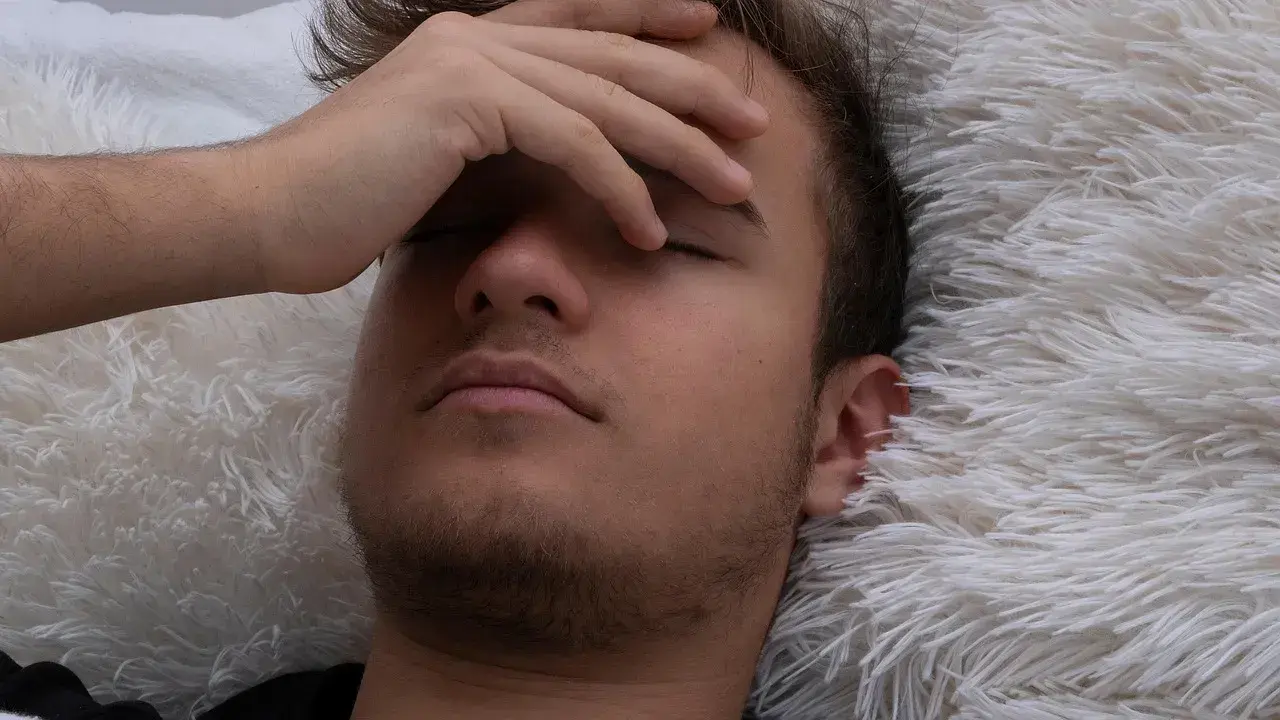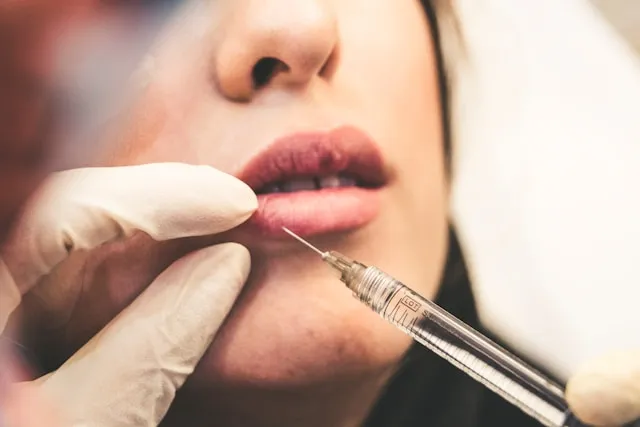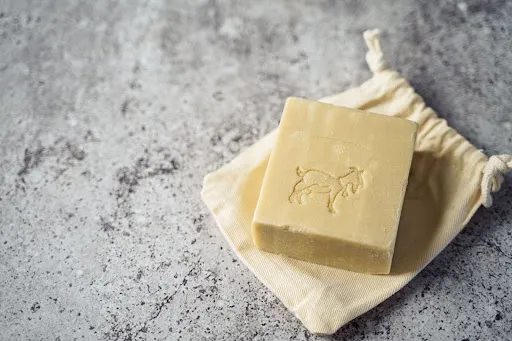What Are Sebaceous Filaments
Sebaceous filaments are tiny, tube-like structures that line the pore and help move sebum to the surface. They are normal anatomy, most visible on the nose, chin, and central forehead.
Up close, they appear as evenly spaced pin dots that are flat or slightly sunken. Squeezing may expel a thin, waxy thread, but squeezing is not advised because it can enlarge pores over time and cause redness or broken capillaries.
What Are Blackheads
Blackheads, also called open comedones, are pores blocked by a plug of oil, dead skin cells, and debris. The dark tip comes from oxidation at the surface, not from dirt.
They feel slightly raised, can cluster on the nose and cheeks, and often appear alongside whiteheads if the routine is too stripping or pore-clogging.
How To Tell The Difference At A Glance
-
Color: Filaments are gray, beige, or skin colored. Blackheads are dark brown to black at the surface.
-
Shape: Filaments look flat and uniform. Blackheads look like discrete raised plugs.
-
Texture test: Filaments express a thin thread. Blackheads express a thicker plug. Avoid squeezing either one.
"Many patients become frustrated trying to eliminate what they think are stubborn blackheads on their nose, when they're actually looking at normal sebaceous filaments," explains Dr. Shamsa Kanwal, M.D., consultant dermatologist and expert contributor to MyHSTeam. "Understanding this difference is crucial because filaments are part of healthy skin function and can't be permanently removed - only minimized with proper hydration and gentle care."
Why The Nose Shows More
The T zone contains more and larger oil glands. When the surface is dehydrated, sebum thickens and moves less freely, so filaments look darker and blackheads form faster.
Heat, humidity, masks, heavy makeup, and friction from glasses can trap sweat and oil and add pressure to pores.
Dermatologist-Approved Daily Routine
Morning
-
Cleanse gently: Use a mild, sulfate-free cleanser to remove sweat without stripping. If redness is a concern, look for soothing complexes such as PeachCalm or SyriCalm.
-
Hydrate and balance: Apply a lightweight serum with Niacinamide and Saccharide Isomerate to support the barrier and refine the look of pores.
-
Moisturize: Choose a non-comedogenic gel cream with Squalane for weightless hydration.
-
Protect: Use broad-spectrum SPF 50 every morning. Mineral filters are often better for sensitive or redness-prone skin.
Night
-
Double cleanse when wearing sunscreen or makeup. Start with a gentle oil or micellar cleanser, then a mild water-based cleanser.
-
Exfoliate one to three evenings per week with very gentle options such as jojoba beads or rice bran powder. These polishes are without micro tears and help prevent buildup.
-
Calm and replenish: Use barrier-friendly actives like Niacinamide, Unisooth ST, or SEPIBLISS FEEL to reduce visible redness and reactivity.
-
Seal lightly: Apply a non-comedogenic moisturizer with Squalane. If you prefer a humectant boost, layer a hydrator with Saccharide Isomerate first.
Targeted Treatments
-
For visible blackheads: Consider a low-strength leave-on BHA no more than 2 to 3 nights weekly if your skin tolerates it. Keep the rest of the routine simple on those nights.
-
For noticeable filaments: Focus on hydration and oil balance. When the barrier is well hydrated, filaments look lighter and less obvious.
-
Professional care: In-office extractions, gentle peels, or tailored routines from a dermatologist can safely clear stubborn congestion.
Ingredients That Help
-
Niacinamide: Supports the barrier, helps regulate oil, and reduces redness that magnifies pores.
-
Saccharide Isomerate: Binds water for long-lasting hydration and helps reduce dehydration-driven oiliness.
-
Squalane: Lightweight emollient that softens without clogging.
-
Soothing complexes: PeachCalm, SyriCalm, SEPIBLISS FEEL, and Unisooth ST help calm reactive, mask irritated skin.
What To Avoid
-
Harsh scrubs, extraction strips, or digging with tools at home. These can stretch pores and trigger rebound oil.
-
Over-cleansing more than twice daily or using alcohol heavy toners. This weakens the barrier and makes plugs more likely.
-
Thick occlusive creams and heavy silicone layers on the T zone if you are prone to congestion. Choose non-comedogenic textures.
Smart Habits That Help
-
Wash pillowcases every 2 to 3 days and clean glasses nose pads weekly.
-
Remove makeup and SPF fully every night.
-
Keep fingertips and tools off your nose during the day to reduce pressure and oil transfer.
-
Choose breathable masks and replace them often if you wear them for long periods.
When To See A Dermatologist
-
If plugs are deep, frequent, or painful despite gentle care.
-
If you notice scarring, visible blood vessels, or recurring cystic bumps.
-
If you suspect fungal folliculitis or another condition that mimics blackheads.
Did You Know? Pores do not open or close like doors. They can look larger when they are filled with oxidized oil or when the skin is dehydrated and tight. Consistent hydration, gentle cleansing, and daily sunscreen help pores appear smoother without aggressive treatments.
Takeaway
Sebaceous filaments are normal. Blackheads are clogs. The solution for both is not squeezing or stripping. It is steady, gentle care that keeps the barrier strong, sebum fluid, and pores clear.
Use a mild cleanser, hydrate with Niacinamide and Saccharide Isomerate, moisturize with a non-comedogenic Squalane-based cream, and apply SPF 50 every morning. Exfoliate sparingly and seek professional care if congestion persists or you notice scarring.
अक्सर पूछे जाने वाले प्रश्नों
Are sebaceous filaments bad?
No. They are normal and cannot be removed permanently. With good hydration and a simple routine they become less noticeable.
Do pore strips help?
They may lift surface debris, but they can irritate, break capillaries, and make pores look larger. Gentle, regular care is safer and more effective.
Will moisturizers clog my pores?
Skipping moisturizer can dehydrate the surface and increase oiliness. Pick lightweight, non-comedogenic formulas with Squalane and Niacinamide.
How often should I exfoliate?
Most people do well with one to three times weekly. If your skin is sensitive, start once weekly with very gentle options. Always follow with calming hydration.
Can diet affect blackheads?
High glycemic foods and some dairy may worsen oiliness in some people. A balanced diet with omega 3s, plenty of water, and antioxidants supports calmer skin.
लेखक






